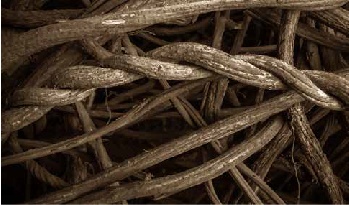ADF Webinar #7: Demystifying the Myths about ayahuasca and DMT
Does ayahuasca = DMT?
In this new episode of our webinar series, Bia Labate and José Carlos Bouso debate and discuss the biomedical effects of N, N-dimethyltryptamine and ayahuasca, demystifying commonly held points of view about these substances. DMT is the psychoactive component of ayahuasca, which becomes orally active in ayahuasca because of the endogenous MAO inhibitors present in Banisteriopsis caapi.
We explore the differences between DMT and ayahuasca from an historical and cultural point of view, illustrating how the consumption of psychoactive substances cannot be understood outside of their contexts – both the set (characteristics of the individual) and setting (consumption context): in other words, the complex cultural, indigenous, traditional, therapeutic, and religious dimensions of ayahuasca practices cannot be reduced to a mere active component (N, N-dimethyltryptamine).
DMT, structurally similar to psilocybin, is produced in many species of plants (Mimosa hostilis, Diplopterys cabrerana, Psychotria viridis, or Anadenanthera peregrina), which are commonly used in indigenous Amazonian shamanic practices. DMT is generally not active orally unless it is combined with a monoamine oxidase inhibitor (MAOI). It was first synthesized in 1931 by German chemist Richard Helmuth Fredrick Manske. Since 1955, N,N-dimethyltryptamine has been found in at least fifty plant species belonging to ten families, and in at least four animal species, including one gorgonian and three mammalian species (including humans).
Categories:
NEWS
, ADF
Tags:
ayahuasca
, DMT
, Ayahuasca Defense Fund
, webinar

